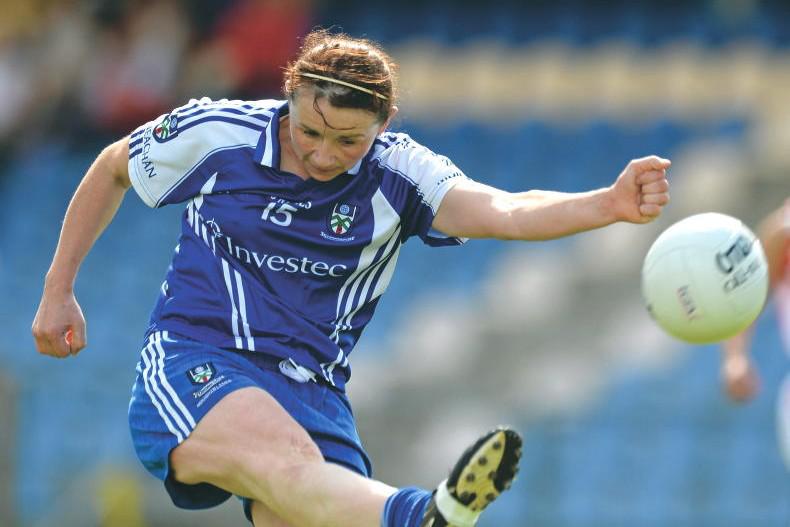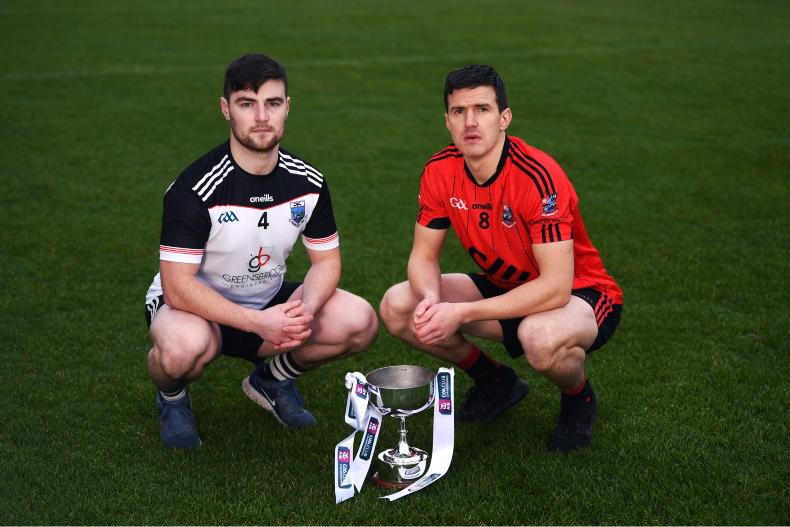There is a story told in my extended family which feels apposite when it comes to assessing rule changes in sport, and particularly the new suite of regulations in Gaelic football.
After supper one evening, my grand-aunt had to go out to feed the calves and left the instruction for her daughter to “clear the cups off the table”.
A half-hour or so later, she returned to the house to find a table that was perfectly devoid of cups – plates, knives and forks were still plentiful, however!
Many parents reading this will probably identify with the frustration – and maybe sneaking admiration – that comes with the issuing of a directive to children and them following it absolutely literally, while searching for loopholes.
“No more talking until the dinner is eaten!” will be met with verbal silence but the simultaneous increase in the kicking of table-legs and clanking of glasses until the order is upgraded to “no noise at all!”
The rules of golf overcome this grey area to a degree by including the provision of intent – essentially, a player themselves knows what is cheating and what is not. The spirit of the law is given as high a status as the letter of the law. Of course, in a game that prides itself on being ‘self-policing’, that laissez-faire attitude can leave the rules open to abuse.
Gaelic football is probably as far from self-policing as a sport can be – the occasional call for a second referee underlines that. However, the new rules being trialled during the Allianz Football League provide an insight into (a) how quickly behaviours can change and (b) how coaches will read the letter of the law and, like the girl who cleared the cups off the table, figure out how to exploit the regulations.
While this weekend will bring just the third round of fixtures across the four divisions since the entering into the brave new world, the first two weekends’ action were quite the departure from what we have been used to.
The material difference on the scoreboard has of course come with the two-point scores. The second weekend brought more examples of the first – a stand-out was Galway’s 0-26 (0-7-12) to 0-16 (0-1-14) win over Mayo, though of course a cursory glance at the new scoring layout shows that the Tribesmen would have won that game, anyway.

Mayo goalkeeper Colm Reape runs back to his own half of the pitch after he lost possession during the Allianz Football League Division 1 match between Mayo and Galway last weekend. /Piaras Ó Mídheach/Sportsfile
Orange flags
In fact, while just nine losing teams across 29 games in the four divisions over the opening two weekends had more two-pointers than the teams that beat them, only one match had an outcome that would have been different under the old scoring system.
That was in Division 4, where previously Longford’s 2-10 would have been less than Limerick’s 1-15, but 2-2-8 outweighed 1-0-15 when orange flags were taken into account.
The evolution of how teams take advantage of the scoring arc will be an interesting one.
Last week, the excellent Gaelic Stats (@gaelicstats) account on X, formerly Twitter, showed a graph that illustrated how a free taken on the edge of the new area will have an expected success rate of 78% – perhaps a little higher than one might expect for something providing twice the reward.
We can be sure that plenty of coaches will be aware of such a statistic and be ready to take advantage.
It could be the case that, just as the occurrence of three-pointers in basketball increased based on research regarding risk and reward, teams target the creation of high-percentage scoring opportunities that bring a greater return on the scoreboard.
The ‘three up’ rule has already been met by creative sideline minds. With a defending team having to leave a fifth of their team in the other half, the opposition assign a marker to each player – and then take advantage of the fact that their goalkeeper can be brought into play.
Reserving judgement
It’s obviously something that wasn’t overlooked by the Football Review Committee (FRC) as they specified that, apart from a pass inside the large rectangle, a goalkeeper could only receive the ball from a team-mate in the opposing half. The upshot is the creation of 12-v-11 ‘overloads’ as fly-keepers rush forward – one wonders if the balance might tilt towards naming an outfielder as number one.
The FRC has been clear that the experimental rules – they call them ‘enhancements’ but it’s still too early to say – can be changed on the hoof. Like needing to say that the table needs to be cleared of all cutlery and crockery, the minimum of three up might need to be repurposed to describe it as a maximum of 11 up.
The consolation is that, when things are framed in a clear and positive way, the exploitation of the situation will cease.
After the Derry-Tyrone game, a viral clip showed a Tyrone player needlessly flicking the ball away following the concession of a free at midfield, followed by that free being brought forward by 50 metres, turning it into an almost-guaranteed score.
There was some outcry that it was too severe a punishment but, because dissent had reached such a point, a deterrent so prohibitive simply had to be put in place. Teams and players have adapted quickly, because they have had to.
It’s an undeniable positive to the new regime, along with the solo-and-go, but we’ll reserve judgement on the rest for now.
There is a story told in my extended family which feels apposite when it comes to assessing rule changes in sport, and particularly the new suite of regulations in Gaelic football.
After supper one evening, my grand-aunt had to go out to feed the calves and left the instruction for her daughter to “clear the cups off the table”.
A half-hour or so later, she returned to the house to find a table that was perfectly devoid of cups – plates, knives and forks were still plentiful, however!
Many parents reading this will probably identify with the frustration – and maybe sneaking admiration – that comes with the issuing of a directive to children and them following it absolutely literally, while searching for loopholes.
“No more talking until the dinner is eaten!” will be met with verbal silence but the simultaneous increase in the kicking of table-legs and clanking of glasses until the order is upgraded to “no noise at all!”
The rules of golf overcome this grey area to a degree by including the provision of intent – essentially, a player themselves knows what is cheating and what is not. The spirit of the law is given as high a status as the letter of the law. Of course, in a game that prides itself on being ‘self-policing’, that laissez-faire attitude can leave the rules open to abuse.
Gaelic football is probably as far from self-policing as a sport can be – the occasional call for a second referee underlines that. However, the new rules being trialled during the Allianz Football League provide an insight into (a) how quickly behaviours can change and (b) how coaches will read the letter of the law and, like the girl who cleared the cups off the table, figure out how to exploit the regulations.
While this weekend will bring just the third round of fixtures across the four divisions since the entering into the brave new world, the first two weekends’ action were quite the departure from what we have been used to.
The material difference on the scoreboard has of course come with the two-point scores. The second weekend brought more examples of the first – a stand-out was Galway’s 0-26 (0-7-12) to 0-16 (0-1-14) win over Mayo, though of course a cursory glance at the new scoring layout shows that the Tribesmen would have won that game, anyway.

Mayo goalkeeper Colm Reape runs back to his own half of the pitch after he lost possession during the Allianz Football League Division 1 match between Mayo and Galway last weekend. /Piaras Ó Mídheach/Sportsfile
Orange flags
In fact, while just nine losing teams across 29 games in the four divisions over the opening two weekends had more two-pointers than the teams that beat them, only one match had an outcome that would have been different under the old scoring system.
That was in Division 4, where previously Longford’s 2-10 would have been less than Limerick’s 1-15, but 2-2-8 outweighed 1-0-15 when orange flags were taken into account.
The evolution of how teams take advantage of the scoring arc will be an interesting one.
Last week, the excellent Gaelic Stats (@gaelicstats) account on X, formerly Twitter, showed a graph that illustrated how a free taken on the edge of the new area will have an expected success rate of 78% – perhaps a little higher than one might expect for something providing twice the reward.
We can be sure that plenty of coaches will be aware of such a statistic and be ready to take advantage.
It could be the case that, just as the occurrence of three-pointers in basketball increased based on research regarding risk and reward, teams target the creation of high-percentage scoring opportunities that bring a greater return on the scoreboard.
The ‘three up’ rule has already been met by creative sideline minds. With a defending team having to leave a fifth of their team in the other half, the opposition assign a marker to each player – and then take advantage of the fact that their goalkeeper can be brought into play.
Reserving judgement
It’s obviously something that wasn’t overlooked by the Football Review Committee (FRC) as they specified that, apart from a pass inside the large rectangle, a goalkeeper could only receive the ball from a team-mate in the opposing half. The upshot is the creation of 12-v-11 ‘overloads’ as fly-keepers rush forward – one wonders if the balance might tilt towards naming an outfielder as number one.
The FRC has been clear that the experimental rules – they call them ‘enhancements’ but it’s still too early to say – can be changed on the hoof. Like needing to say that the table needs to be cleared of all cutlery and crockery, the minimum of three up might need to be repurposed to describe it as a maximum of 11 up.
The consolation is that, when things are framed in a clear and positive way, the exploitation of the situation will cease.
After the Derry-Tyrone game, a viral clip showed a Tyrone player needlessly flicking the ball away following the concession of a free at midfield, followed by that free being brought forward by 50 metres, turning it into an almost-guaranteed score.
There was some outcry that it was too severe a punishment but, because dissent had reached such a point, a deterrent so prohibitive simply had to be put in place. Teams and players have adapted quickly, because they have had to.
It’s an undeniable positive to the new regime, along with the solo-and-go, but we’ll reserve judgement on the rest for now.










SHARING OPTIONS